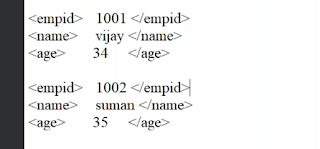Exception Class in Object Oriented Programming
- Exception is a problem that arises during execution of the program.
- The purpose of exception class is to raise and handle the exception.
- We use try block to raise a exception and catch block to handle a exception.
- The exception class name must start with CX.
- CX_ROOT is the global class ( parent class ) for all the exceptions.
-
There are 3 subclasses of parent class CX_ROOT.
- CX_STATIC_CHECK :- It is checked by both the compiler and runtime system.
- CX_DYNAMIC_CHECK :- It is checked only at runtime system.
- CX_NO_CHECK :- It is not checked either during compile time and runtime.
Note :-
- While creating the exception class, system by default provides CX_STATIC_CHECK as the super class.
Ways to Create Exception Class :-
- There are 2 ways to create the exception class.
- Exception class with messages of message class.
- Exception class without messages of message class.
Creating Exception Class without using messages :-
-
Step 1 :- Go to transaction code SE24.
-
Step 2 :- Give a name for your exception class.
-
Step 3 :- Click on create button.
-
As soon as you will click on create button, SAP will automatically provide CX_STATIC_CHECK as the superclass for our exception class.
- Give short description and enable checkboxes according to your need.
- Click on save button and assign packages and transport requests.
- Many attributes from super class will be inherited automatically.
-
Step 4 :- In texts tab we will be proving a exception id.
-
Step 5 :- Open the attributes tab, you will find a constant attribute declared automatically.
- Save and activate the class.
How to check this Class?
- We have a function module SOTR_GET_TEXT_KEY.
- Execute this Function module from SE37 and provide the initial value of above constant attribute.
- Press F8.
- We will see more features of exception class in next part.







.png)
.png)

Comments
Post a Comment